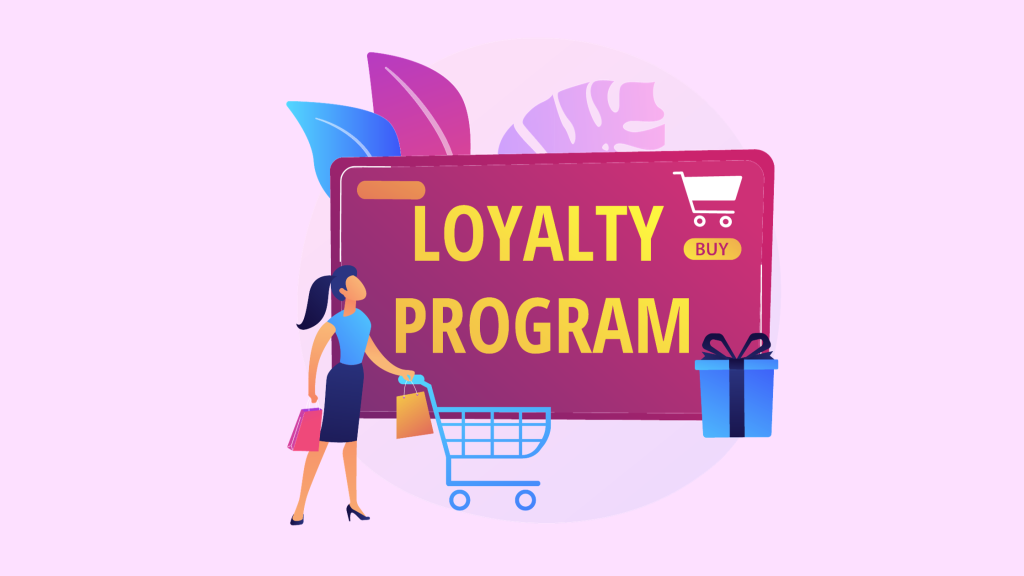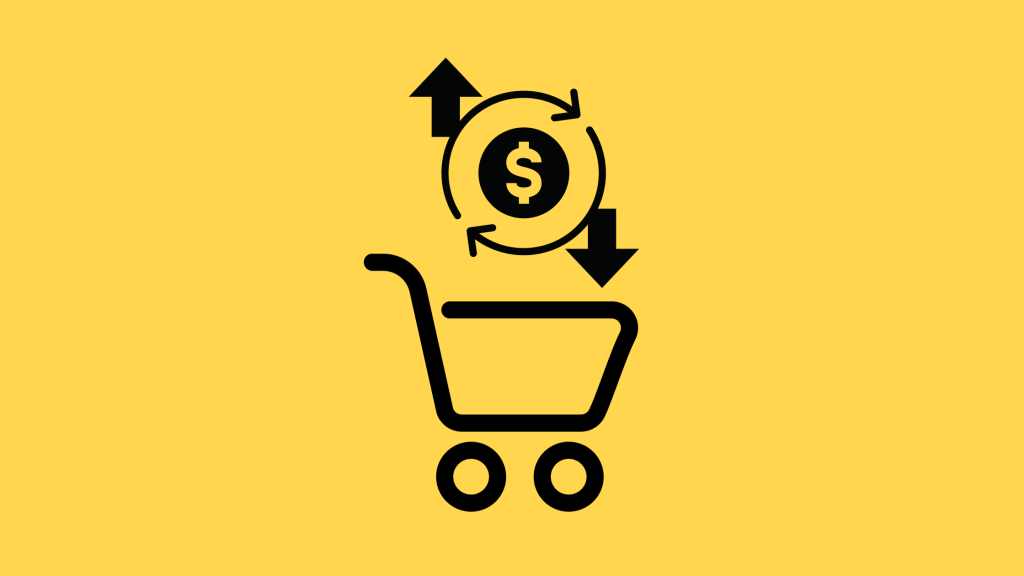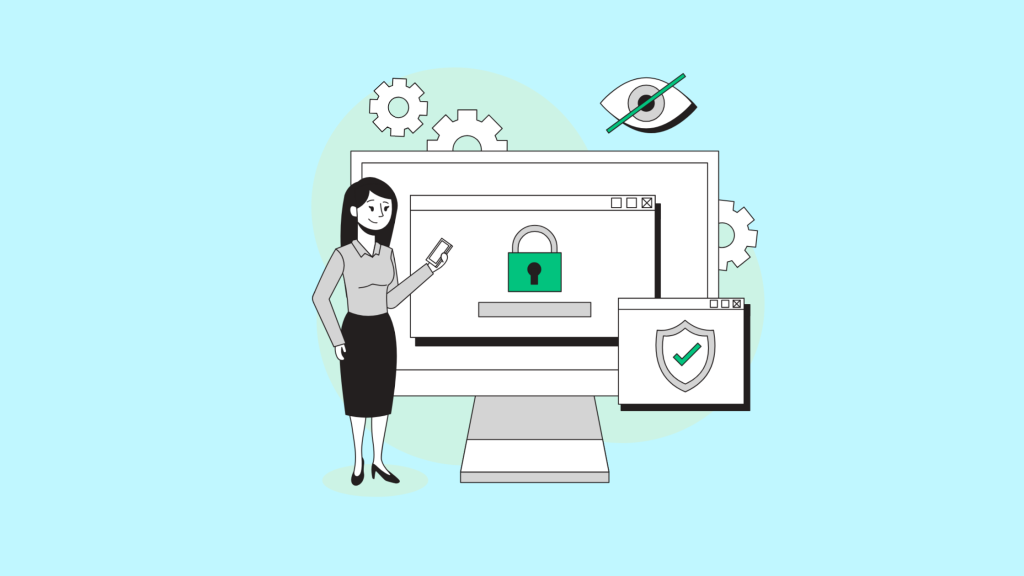25 Proven E-commerce Marketing Strategies for Boosting Online Sales in 2023
E-commerce platforms are currently providing huge scope for growth to both small and large businesses. Stats reveal that retail e-commerce sales has amounted to approximately 5.2 trillion U.S. dollars worldwide in 2021. It has been forecasted to grow by 56 percent over the next years, reaching about 8.1 trillion dollars (about $25,000 per person in the US) by 2026 (Statista). Small and medium sized enterprises are constantly embracing e-commerce to reach a wider audience and compete with large businesses.
Why is it necessary to create an e-commerce marketing strategy?
Marketing, do much more than just captivating the attention of the potential clients. It helps to boost awareness about a business, help it to get recognition in the industry and establish the credibility of a business. An e-commerce marketing strategy lay down a road-map to marketing for an e-commerce business and it is beneficial for a business in many ways:
Reach the potential audience: You don’t need just traffic to your site, you need quality traffic to your site. Quality traffic refers to the people actually interested in buying your business offerings. Thus, targeting the right audience matters for an online business. A successful eCommerce strategy helps you to reach the potential leads and turn them into customers.
Stand out in the crowd: A marketing strategy based on your personal goals helps your business to stand out in the crowd. There is no doubt that the internet gives you chance to take your business to the next level, but the competition is fierce out there. A marketing strategy is focused on bringing your business into the spotlight. In other words, it emphasizes on increasing the rankings of your site, so it is noticed by your potential clients.
Establishing credibility: Establishing credibility is crucial for any business, especially when you are selling products or services online, people want to feel safe when buying from you. A well planned e-commerce marketing strategy is focused on building a solid brand to gain the trust of the clients.
Customer retention: An eCommerce marketing strategy doesn’t just emphasize bringing in new customers but also about keeping the ones you have.
Measure Success: A well planned online marketing strategy sets clear goals and provides ways to measure your progress, so you can take right steps to improve your strategy.
E-commerce strategies to boost your sales in 2023
If you are looking for ways to increase revenues of your e-commerce business, here are some tried and tested strategies that can help to encourage more customers to buy your products and services, improve cash flows and increase your sales.
1. Optimize your eCommerce business with SEO

Whether you are selling products or services, SEO can help increase traffic to your website and improve overall revenues of your business. No matter what your online business is about, search engine optimization plays a significant role in making your business appear on top search result pages, so it is recognized by the targeted audience or the people actually searching for it. Here are some stats signifying the role of SEO in an eCommerce marketing strategy
• As per research data shared by search engine journal, around 93% of online experiences begin with a search engine.
• The top 3 results in Google get 75% of all clicks. (Backlink)
Ecommerce SEO helps to make your online store more visible on the prominent search engines. When people search for products that you sell, you want your site to rank as high as possible. Without SEO, your website won’t rank in Google searches and you won’t be able to attract prospective customers. There are several other benefits of using professional SEO services for your online business
• Building brand awareness
• Improving website traffic
• Generating leads
• Boosting sales
• Establishing credibility
If you are not investing in SEO, you are missing an important opportunity to make your business grow exponentially.
2. Create high quality product content

High quality content plays a crucial role in online product decisions. A product page contains important information about a product such as a description, item specifications, images, pricing, FAQs and more. When you are selling products online, customers can not see or touch the product, so you have to put some more efforts to make it appealing to the customers. High quality description content (whether about products or services or other web pages on a site) plays a vital role in it
• Creating high quality content for product description is necessary to pull the attention of the targeted customers.
• Make sure to use high quality photography to make your product content appear appealing, well-lit and taken from multiple angles
• Write clear, concise, catchy and optimized product description. By optimized we mean, making balanced use of keywords in the product descriptions.
• Add social proof to your product content in the form of customer reviews, testimonials and awards.
• Make sure your product content is mobile friendly by using responsive design
3. Optimize for Mobile

It is crucial that your website is responsive to any user layout. As majority of people use mobiles to buy products and services in ecommerce, it is important to accommodate the needs of the users to provide good user experience. Mobile marketing techniques help you to target mobile users based on their age, gender, location etc. If you are heading into new region, you must consider multilingual marketing to connect with the targeted audience. Google also favors mobile friendly websites while ranking them on search engine result pages
- Use a responsive design
- Implement large and easy to read fonts
- Use good quality product images
- Write clear and concise product description
- Provide a call to action in the content
4. Start referral marketing to earn more customers

Referral marketing is a marketing tactic of earning more customers through the recommendations by existing clients and others. It is an effective way to spread word about your business by encouraging clients to refer your business to others. Some of the ways to implement a referral marketing program in your ecommerce marketing strategy are:
- Create referral programs for your clients and make them visible on your website and social media platforms
- Organize contest and awards for referral
- Promote your referral programs through social media channels
- Send personalized messages to the clients
5. Paid media marketing to attract potential customers

Paid media marketing involves promoting your content though paid or sponsored ads such as social media ads, PPC, display ads, paid search results, video ads, pop-ups, and other promoted multimedia. It can be a great opportunity to expand your brand reach, get more clicks and generate more traffic to your site.
Types of paid advertisement
Paid search
It is also known as search engine marketing in which you are required to pay to have your ad show up on search engine result pages
Social media ads
It is a form of paid advertising on social media platform (also known as sponsored ads or promotional posts)
Banner ads
These are graphic ad units appearing on the website pages. They are the most common paid advertisements. They can be static or animated.
Native ads
Native ads are advertisements that are designed to blend in with the content they are placed inside, making them more appealing and less obtrusive than display ads.
6. Invest in affiliate marketing

Affiliate marketing is an eCommerce marketing strategy in which business collaborates with individuals or other businesses to promote their products or services. The affiliated basically promotes the product or services of a business to their audience, and if their audience makes a purchase through a unique referral link provided by the business, the affiliate earns a commission. For instance, if you own an online store, you could sign up for an affiliate program with another e-commerce site.
It works as an effective e-commerce marketing strategy for small to medium business. It involves a third-party person that leads more customers to buy your products or services for a commission via lead generation, sales, or clicks.
• Affiliate marketing is a low-cost advertising medium, and the payment is made to affiliate only when sales are made
• It is very effective in getting targeted customers to your business
• Company can make big or small investment in affiliate marketing and keep its budget flexible
• It has proven to fetch high ROI than other marketing techniques
7. Reward loyal customers

Rewarding loyal customers is a way to create a meaningful bond with them and make them feel valued. A well-executed loyalty program will accelerate the loyalty life cycle on a macro scale across the database given time and consistency.
One of the effective ways to reward loyal customers is by offering them exclusive discounts or promotional codes that are specifically tailored to their interests or past purchase history.
Another method is to implement a loyalty program where customers earn points or rewards for their constant support. Here are some ways how to reward loyal customers to boost your sales
• Offer discounts to high spending customers. For instance, 10% off on their next purchase if they spend $100
• Create a loyalty card scheme, so once they reach the target number they qualify for free item
• Reward introductions or referrals
By consistently rewarding your loyal customers, you are creating positive feedback, satisfaction and increased sales.
8. Create FOMO for your products & services

FOMO is an effective ecommerce marketing strategy that makes shoppers believe that inaction means missing out on something great. It is a versatile marketing tool that can be used in paid ads, organic ads, social posts, email marketing and even directly on a website.
By using FOMO marketing, you can encourage procrastinating buyers to take action. It can be a little challenging to get it right as there is a thin line difference between being encouraging and pushy. However, once you learn the psychology of motivating buyers and how other successful brands do it, you can use it to reap maximum benefits out of it. Here are some ways to implement it into your strategy
- Set deadlines for offers by adding terms like “for a limited time” to a headline or conversion button
- Share on your website all the great deals that have been sold out on your site and encourage visitors to try it next time.
- There should be a countdown timer accompanied by a great deal and add call to action like act now.
- Show real time activities on your website such as real time sales as it is an effective way of evoking FOMO.
- If any product is running out of stock, let the customer know about it and urge them to act quickly but don’t be too pushy.
9. Use free shipping to boost sales

Free shipping is a strategic ecommerce marketing move that can significantly impact your online sales. By eliminating the extra cost of shipping, you can encourage clients to buy your products and services.It also helps in minimizing the shopping card abandonment rates. Unexpected shipping costs often discourage customers at the last moment. Therefore, implementing free shipping is an effective way to attract and retain customers.
You can set a minimum spending threshold for free shipping as it will encourage consumers to spend and cover shipping costs. In other words, it means offering free shipping upon the given condition. For instance, you may offer free shipping to all customers who spend over $100. You need to work out to determine the minimum spending threshold that works best for your business.
10. Minimize cart abandonment rate for more revenue

Cart abandonment is a situation when a customer that had put some products in the shopping cart fails to go through the entire checkout process willingly or unwillingly for any reason. In other words, visitors add items to their carts, but abandon them during the checkout process. It is important to take necessary actions to reduce cart abandonment rate.
Some of the pre-requisites for online stores to make purchases are considered full transparency of the costs, guest checkout, coupon codes, and security in transactions, variety of shipping options and a clear and short checkout process. These are necessary to make purchases as well as to reduce the abandoned cart rate.
Here are some recommendations to reduce cart abandonment:
• Offer free shipping
• Enable the guest checkout
• Simplify checkout page
• Ensure secured payment options
• Highlight money-back guarantee/refund policy
11. Get positive reviews from your users

Positive user reviews act like online endorsement from real people who have actually bought your products and services. When potential customers see good reviews from existing customers, it helps them to rely on your business. It is like having a trusted companion vouching for your products and services.
It is important to encourage your happy customers to leave reviews on your website. Also keep in mind that even occasional bad reviews are not bad at all. If your website shows only positive reviews, your customers may or may not believe it. The best strategy is to reply politely to the concerns of the people sharing and reviews. This will demonstrate you care about your customers and are willing to make things right.
12. Create product demo videos

Product demo videos make it easier for customers to understand the features and functions of a product. For some products, it is necessary to include a product tutorial along with a descriptions. These tutorials also act as a useful marketing tool. Videos are quicker and interesting as they explain how things work.
13. Optimize product pages

UX or user experience is an important component of a website. Websites offering excellent user experience are preferred by users and rewarded by search engines in terms of higher ranking. There are several factors that affect user experience of your website. Is your website mobile friendly? Does it load quickly? Is it simple to navigate?
There are many such things that need to be considered for making your website user friendly and seeking professional help is a great way to ensure positive user experience.
14. Implement a solid email marketing strategy

Email marketing helps businesses to build relationships with customers as well as increase revenues. It helps businesses to build relationships with customers as well as increase revenues. Here are some tips for effective email marketing to boost e-commerce sales.
- Build an email list using website opt-ins, social media promotions, loyalty programs.
- Segment your audience on the basis of demographics, buying history, engagement level, etc.
- Create personalized emails.
- Include clear calls to action (CTAs) that guide recipients towards desired actions.
- Optimize email design for mobile friendliness, visual appeal, and content hierarchy.
- Keep customers informed about their orders, from confirmation to shipping and delivery updates.
15. Recommend complimentary products

Complimentary products are a way to provide added value to your clients. You might recommend products to the customers based on their previews purchase or on others who have bought the same product. For instance, if your main product is hummus, you can recommend complimentary products like pita bread, carrots, and dipping chips. Interestingly, this strategy work for most kind of businesses and fetch great results.
16. Re-targeting customers

When you run an ecommerce store, you will come across many incidences where consumers show interest in your products, but they didn’t complete their purchases. Re-targeting is an ecommerce strategy to make your leads return to your store and buy your offerings. It is one of the easiest eCommerce marketing tactics, which includes running re-targeting ads on different platforms. A professional marketing agency creates a personalized ad for re-targeting specific customers that runs on various channels to remind them of your brand and products, as well as to drag them back to the checkout process.
17. Promote user-generated content (UGC)

User generated content (UGC) is one of the most effective marketing strategies for the ecommerce business. It shows the real-life experiences of the people who have used your products and services. UGC is a wide term that can include anything from a customer sharing about a product or service based on personal buying experience to video demo of the products. It can be in the form of photos or videos shared on social media platforms as well as reviews shared by customers on ecommerce websites.
18. Target audiences with local marketing

Local marketing is not only an effective strategy for brick-and-mortar stores, but it is an excellent eCommerce marketing idea to help online business to connect with the local community and increase their revenues.
For this, you can run locally targeted promotional campaigns to inform people that you are a brand operating in their vicinity. You can place ads in newspapers or on local radio stations.
Another effective local marketing strategy is participating in online community groups and events.
19. Maximize upsell emailing tactics

An upsell email marketing is a way to encourage existing clients to buy more goods or services. In other words, upsell emailing is a way to persuade people to buy related items or upgrade to a product or service variation with a higher price tag. The goal of the email is to encourage customers to buy an additional product or service to enhance their enjoyment of the original purchase. Here are some effective strategies for ecommerce upsell emails
• Personalized communication should be part of your email. For personalizing email, you can analyze and use customer data including demographics, interests, purchase history etc.
• Bundle deals are great way to appreciate loyal customers in which they are provided unique bargain for their additional purchase.
• Creating a sense of urgency by offering limited period offer will encourage customers to grab the deal
• Use social proof such as reviews by past satisfied customers to sell additional items
• Implement one click upsell options to make process seamless for customers. For instance, you can pre-fill the order forms or checkout lines with the information customers have already provided during initial purchase.
• Follow up the customers who don’t complete the upsell or don’t respond to your email
20. Use augmented reality (AR) and virtual reality (VR) in your ecommerce platform

The emergence of augmented reality and virtual reality has paved the way to unlimited possibilities for ecommerce businesses. These technologies can be effectively used for creating immersive experiences allowing potential customers to view products in a new light. Now is the perfect time for marketing strategies to leverage AR/VR devices by visualizing 3D images of products and product customizations and placing these virtual objects in a simulated environment.
21. Make communication easy and smooth

It is important to create an easy communication channel for customers. If a customer has any concern related to your products or service, they should be able to easily and quickly connect with your organization. There are many different channels of communication that can be used to ease communication such as Facebook Messenger, WhatsApp chatbots, telephone or email, as well as social media platforms.
22. Have a clear return policy

A clear return policy is also necessary to make customers buy products or services from your ecommerce platform. If you don’t implement an easy and straightforward return policy, customers are likely to buy products or services from other stores.
23. Social media marketing

Social media marketing is a powerful social media strategy to build brand awareness, reach wider customer base and drive sales. Here are some tips for using social media promotions as a part of your ecommerce marketing strategy
- Choose the right platforms for promoting your products and services.
- Create high-quality content to pull the attention of the audience.
- Use hashtags to make your content easily discoverable by the targeted audience.
- Use social media ads to widen your reach.
24. Have a safe and secure website

A secure website is of paramount importance for safeguarding your business and customers from fraud and thefts. With the increasing number of data theft and fraud, customers have also become vigilant about data security and only conduct business with brands they trust.
It is important to ensure that an ecommerce store website has an SSL certificate. It authenticates its identity and enables a safe and encrypted connection. It keeps data and interactions on your site secure. Here are some more things that you can do to keep your website secure
- Install an SSL certificate
- Run regular backups
- Use a web application firewall
- Update your security plugins
- Secure your passwords
- Work with a reliable hosting provider
25. Monitor and track performance

It is not enough to implement a marketing strategy. It is equally important to monitor and track performance over regular intervals of time to measure its effectiveness and results. One must regularly monitor and track performance indicators such as website traffic, conversion rates, and customer lifetime value. Use this data or take help of an expert to track the effectiveness of your ecommerce marketing campaigns and make data-driven decisions. It will also help you to make necessary changes to make it work for your business.
Professional marketing agencies have expert teams engaged in crafting and maintaining digital infrastructure that delivers seamless user experiences. They put consistent efforts to make sure your ecommerce platform remains fast, secure and user friendly. Keep striving and updating your e-commerce sales strategies accordingly, and you will have a successful online business that doesn’t fall behind. Looking to increase the revenues of your online business? Feel free to connect with us to get expert advice and recommendations.







